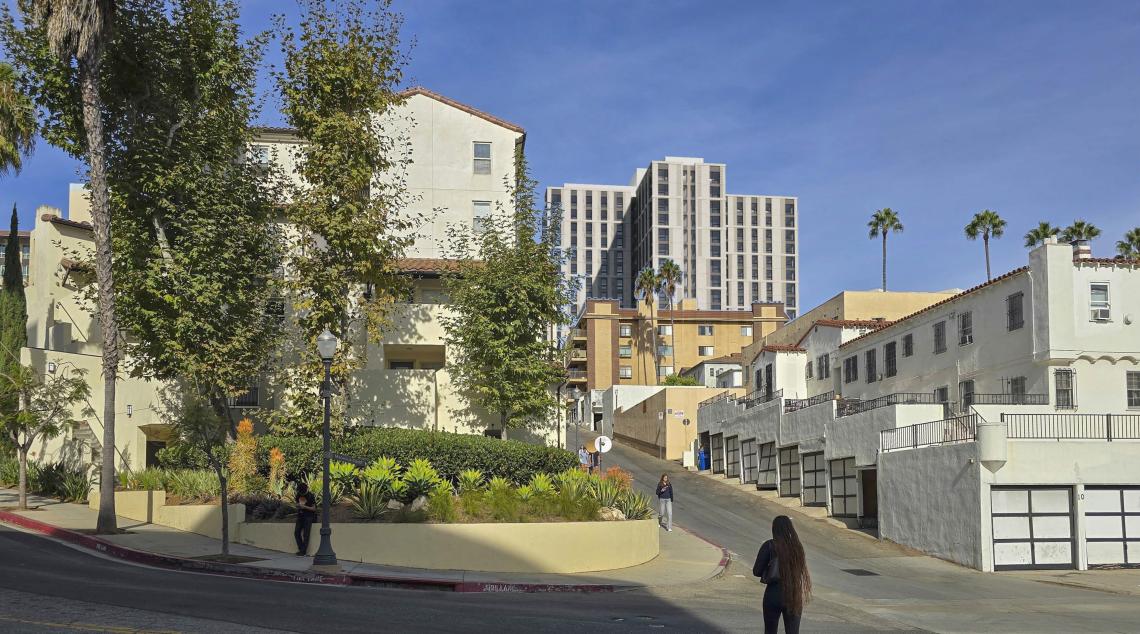Los Angeles Launches Effort to Encourage Starter Homes on City-Owned Vacant Lots
Los Angeles has faced a housing shortage for decades. Prices rise every year, yet wages for many households remain stagnant. For first-time buyers, the idea of owning a home in the city often feels impossible.
Table of Contents
ToggleTo respond, the city is turning toward a new idea: starter homes built on city-owned vacant lots. The program aims to provide more affordable paths to ownership, while also making use of land that has sat unused.
At JDJ Consulting Group, we see this move as more than just a housing experiment. It’s a test of how Los Angeles can balance affordability, density, and community growth. For developers, it creates new chances. For families, it may unlock the door to homeownership.
Starter Homes on Vacant City Lots – Key Takeaways
Los Angeles is launching a plan to unlock affordable starter homes on city-owned vacant lots. Here’s how the initiative unfolds step by step.
Step 1: Identify Vacant Lots
The city maps underused parcels of public land across Los Angeles neighborhoods, targeting sites ready for housing development.
Step 2: Build Starter Homes
Affordable, small-scale units are developed with priority for first-time buyers, ensuring more families can enter the housing market.
Step 3: Strengthen Communities
New homes reduce neighborhood blight, expand the housing supply, and stabilize communities with long-term investment.
Why Starter Homes Matter in Los Angeles
Starter homes once played an important role in the city’s housing market. They gave young families a way to build equity and stability. But over the last 20 years, these homes have nearly disappeared.
Three factors explain why:
Rising land costs – Small homes are less profitable on expensive land, so developers build larger projects instead.
Regulatory hurdles – Lengthy permitting and zoning restrictions make small-scale housing harder to pursue.
Investor demand – Larger investors often favor bigger, denser projects or luxury units with higher returns.
The result? Starter homes have become a rarity in Los Angeles, leaving many first-time buyers with only two choices: rent indefinitely or move out of the city.
By opening vacant public lots, Los Angeles is trying to reset the market. These homes won’t solve the crisis alone, but they can offer a critical first step for middle-income households. For consulting clients, this shows that the city is exploring creative land-use strategies that blend housing need with policy innovation.
Turning Vacant Lots Into Housing Opportunities
Vacant city-owned lots have long been scattered across Los Angeles. Many are remnants of old projects or properties the city acquired but never developed. Left idle, they produce no tax revenue and often attract blight.

Now, these lots are being seen as a resource for affordable housing. By making them available for starter home construction, the city hopes to:
Cut upfront costs for builders who don’t have to compete on the open land market.
Bring new life to underused neighborhoods by adding residents and activity.
Show proof of concept for small-scale infill housing, which has often been overlooked.
For developers and investors, this move signals that Los Angeles is serious about rethinking how land is used. But it also comes with responsibilities: adhering to affordability requirements, managing community expectations, and working within city design standards.
This is where guidance from a land use consultant becomes essential. Understanding the fine print of these programs is just as important as the construction itself.
The Role of Zoning, Density, and Parking
Housing policy in Los Angeles often runs into the same obstacle: zoning. Many city lots are zoned for single-family use, which limits the number of units. On top of that, parking minimums can eat up valuable space that could otherwise be used for housing.
Some residents believe starter homes are the right path—small, single-family units that fit within existing zoning. Others argue the city should use these lots to build denser, multi-unit housing to maximize impact.
Both perspectives have merit, but the key challenge lies in balancing scale with community acceptance. Without zoning adjustments, even well-planned programs could result in only a handful of homes, far below what’s needed to address the shortage.
At JDJ Consulting Group, we often work with clients on navigating these exact zoning debates. Whether a project is single-family, multi-family, or mixed-use, success depends on a clear strategy for entitlement, permitting, and compliance.
How This Affects Developers and Builders
For developers, the chance to build on city-owned land can be appealing. Land costs are often the biggest barrier in Los Angeles. Reducing or removing that burden makes small-scale projects more feasible.
Yet, the process is far from simple. Developers may face:
Community review meetings where neighbors weigh in on project design.
Affordability requirements to keep homes within reach of first-time buyers.
City approval timelines, which can delay construction if not managed well.
This is where strategy plays a major role. Partnering with consultants, developers can streamline approvals. They anticipate challenges and present projects in ways that align with city priorities. For JDJ’s clients, this type of guidance often makes the difference between stalled projects and successful builds.
Opportunities for Investors
Investors watching Los Angeles housing trends should pay attention to this initiative. Starter homes represent an underserved part of the market. Most new construction in the city targets either luxury buyers or renters. That leaves middle-income families with very few options.
Demand for entry-level housing will likely grow stronger as younger buyers age into the market. For investors, this means projects aligned with affordability and accessibility could see strong long-term demand.
However, investment strategies must adapt. City-owned lot projects may come with resale restrictions, affordability covenants, or requirements that limit certain returns. A careful review of these rules is necessary before committing capital. JDJ Consulting Group helps investors weigh these risks and decide whether opportunities like this align with their portfolio goals.
Starter Homes on City-Owned Vacant Lots
Why It Matters
Los Angeles is activating unused land to tackle housing affordability.
The Plan
Build smaller, affordable starter homes on vacant city-owned lots.
Impact
Supports first-time buyers, revitalizes neighborhoods, and adds affordable options.
What It Means for Residents
For Los Angeles residents, the benefits of this initiative extend beyond price. More starter homes mean:
Greater stability – Families can settle without being forced out by rising rents.
Community growth – Neighborhoods thrive when more people can own rather than rent.
Diversity of housing – Not everyone needs or wants a luxury condo; some simply want a modest home.
Still, it’s fair to ask whether the city can deliver at scale. Los Angeles has a history of ambitious housing plans that stall or fall short. Residents will watch closely to see if this effort produces meaningful results, or if it remains another small experiment.
Challenges the City Must Overcome
While the program offers promise, it faces several hurdles:
Cost of construction – Even if land is free, building costs remain high.
Lengthy approval processes – Permitting delays could discourage developers.
Zoning barriers – Without reform, many lots will be underutilized.
Community pushback – Some residents may resist change, especially in single-family zones.
These challenges will shape the future of the program. If the city wants success, it must streamline its processes and give developers clear, workable paths forward.
Looking Ahead: A Path to Smarter Housing Policy
The effort to build starter homes on vacant city-owned lots is not a silver bullet. Los Angeles still needs broad zoning reform, smarter parking policies, and better incentives for affordable construction.
But this initiative signals progress. It shows a willingness to experiment with new solutions and use land more efficiently. For developers, investors, and residents, it’s an opportunity to see how targeted housing strategies can work in practice.
At JDJ Consulting Group, we believe the future of Los Angeles housing depends on collaboration between city leaders, private developers, and local communities. Starter homes on vacant lots may be just one step, but it could inspire bigger changes in how the city approaches affordability.
Final Thoughts
Los Angeles is once again in the spotlight for its housing policies. By encouraging starter homes on city-owned vacant lots, the city is opening doors for first-time buyers, testing creative land use, and offering developers new opportunities.
The road ahead won’t be easy. Costs, zoning laws, and approval timelines remain obstacles. But with the right guidance and partnerships, these challenges can be managed.
At JDJ Consulting Group, we help clients navigate this complex landscape. From entitlement strategy to permitting and investment planning, our role is to turn policy shifts like this into actionable opportunities.
Los Angeles may not solve its housing crisis overnight, but initiatives like this show there is momentum toward meaningful change. For families, developers, and investors, that’s a reason for optimism.
Make City Lots Work for Real People
Los Angeles is turning idle, city‑owned lots into starter homes — and that’s a huge opportunity. At JDJ Consulting Group, we help developers navigate zoning strategy, entitlements, and permitting to bring these compact, affordable infill homes to life.
Let’s partner up — book your free consultation now.
📞 (818) 793‑5058
✉️ sales@jdj‑consulting.com
Schedule Your Free Consultation






